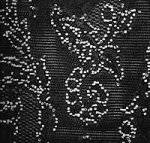- Home
- Resurrection ▾
-
Learn ▾
- Free library
- Glossary
- Documents
- Initiation
-
Shaped fabrics
- Introduction
- Popularization
- Definitions
- Le métier de façonné
- Principes du façonné
- Mécaniques de façonné
- Le jeu des crochets
- Les cartons
- Chaîne des cartons
- Mécanique 104 en détail
- Pour en finir
- Montage façonné
- Empoutage 1/3
- Empoutage 2/3
- Empoutage 3/3
- Punching, hanging and dip
- Autres façonnés
- Façonnés et Islam
-
Cours de tissage 1912
- Bâti d'un métier
- Le rouleau arrière
- Les bascules
- Formation du pas
- Position de organes
- Mécanique 104 Jacquard
- Fonctionnement 104
- Lisage des cartons
- Le battant du métier
- Le régulateur
- Réduction et régulateur
- Mise au métier d'une chaîne
- Mise en route du métier
- Navettes à soie
- Battage
- Ourdissage mécanique
- Préparation chaînes et trames
- Equipment ▾
- Chronicles ▾
- Fabrics ▾
- Techniques ▾
- Culture ▾
- Language ▾
We could not get a better picture.
Source : Cieta, Bulletin 75 - 1998. Gianni Lambrugo
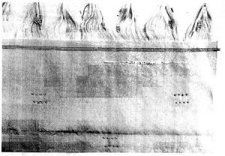
Métier utilisé pour cette expérience
The corresponding carding, resetting, cartons and sketching are partially indicated in FIG. 3. SPECIFIC GLOSSARY: Period from 1885 to 1920 Maccà: glass beads of Venetian origin (Murano), hexagonal in shape. Beaded fabric: Fabric with beads embedded during weaving. Bead chain: Chain on which beads are first threaded Cantre à pearls: small creel that carries the picnics according to a system of velvet shaped Pearl roquetin: coil that bears the pearl wire Pearl comb: patented comb essential to weave this Kind of cloth. Pearl bed: Clearance of the beaded chain necessary to deposit the pearl. Beaded length: the part of the beaded chain supported by the glass stick. Body of pearls: links or hems body with larger eyelets to facilitate the passage of the pearl. Beaded casement: modified casement, where the door beating does not press on the accocats but slides vertically, supported by springs. No pearl: lifting of the beaded threads only, at the same time as the descent of the wing and that brushing. It is a lost blow without shuttle passage (white cardboard). Pearl Note: This is an arrangement that indicates the sequence of colors and the quantity that must be put on the beaded chain to obtain the polychrome effects or the stripes desired.
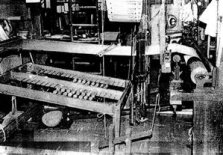
2- The leaf, movable vertically, ie it does not press on the lateral supports but is suspended from springs to descend and mount, actuated by the Jacquard mechanism to facilitate the passage of the beads during this " Called "no beads".
3- Brush, system to facilitate the approximation of the beads. It is a wooden lath that carries tufts of hair and a point of support behind the comb; Actuated by the mechanism, it brushes the upper part of the pitch and brings the beads closer to the comb. Invention attributed to the weaver named Montessuy, or perhaps the Montessuy House (Editor's note: Montessuy is the name of a place linking the Lyon district of Crois Rousse, district of canuts, and the commune of Caluire).
4- Lever system, to lower the leaf, which is controlled by two collars of the mechanism. The weaving is done as shown in the diagrams in fig.2. Fabric layout: Silk Taffeta of 62 cm wide Silk schappe chain 210/2 shade in dark pink 2436 single yarns schappe 48 simple pearl yarn It is desirable that the pearl yarns are double or triple to have a larger Resistance during weaving. Nevertheless, in our execution, we preferred simple threads so as not to create rafts in the plain background or there is no effect beads. The pearl threads are alternated every 10 or 12 threads to make them coincide with the free tooth of the comb. So this requires a perfect match between the carding, the resetting and the comb stitching. Comb of 10 teeth to the cm, with 4 threads in tooth Unedged rims Removal interrupted in 2 body of 4 healds: 1st body threads of bottom, 2nd body beaded threads. Taffeta weave armor Pearl effect armor following sketch 420 cartons at the ratio Reduction of 32 strokes per cm Weight 52gr / linear meter The bead bed must include sufficient clearance to allow the bead to be laid on the fabric without too much sliding, strangle. Using a Jacquard 104 hook mechanics, the weaving ratio would comprise 420 shots, in other words a chain of cartons of about 16 meters. Therefore, we preferred to mount a mechanical system with a hook system, specially restored and restored, which allowed us to execute the fabric with 84 cartons, a length of only 3 m. The mechanics is a Boyer dating from 1858 with the primitive system with movable cylinder able to take 4 positions, with therefore the possibility to weave 4 different armor. The service hooks command: the leaf the mobile comb brush the bell The latter serves to warn the weaver that the next carton must be moved to act on another row, using a tie rod that lowers the cylinder or It must be made to pass from the taffeta weave of the bottom stitched on the first row to that of the pearl decoration stuck on the second row.
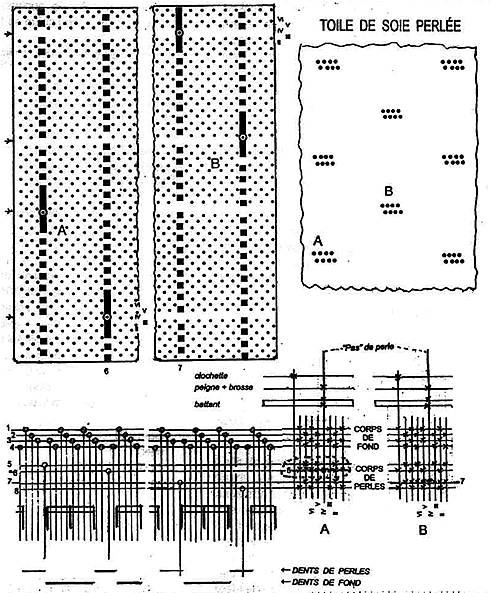
Fig.2 - To simplify the plot, we have shown only the work of pearl threads 5 and 6 and the two plain taffeta threads 1 and 2. The "steps" relative to the II cartons To IV shall be searched in the area surrounded by dotted lines in fig.3
The other part of the comb is that of the top, with flat teeth twice as wide as the lower teeth, which thus occupy the space of two teeth. The two parts are perfectly aligned so that the chain of beads passes from the fixed part to the mobile part without difficulty when the step is opened. This upper part is oscillating, ie it presses on the lower teeth and moves away at the appropriate moment, actuated by the mechanism. In the calibrated opening which corresponds to the measurement of a bead, ascends and descends the beaded chain with the beads threaded. When the step closes, the leaf goes up; The pearl is placed in the lower part of the comb and is pushed on the last shot thrown. The soldering of the teeth serves to render the lower comb rigid, since, as it has no cries, its teeth will move and prevent the weaving. It also serves to insulate the free tooth necessary for the beaded chain and to prevent it from slipping into neighboring unaffected teeth. Two-thirds of the teeth can be welded with as many beads as possible (1/3) with the possibility of more detailed decoration. The calibrated opening is adjustable according to the length of the bead but everywhere identical because it is not possible to weave together beads of different dimensions.
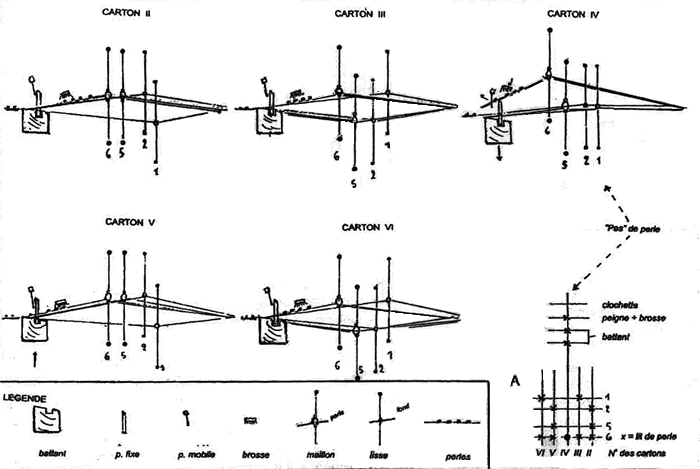
Fig1. The velvet creel and the two-part comb for the passage of the pearl
As far as Italy is concerned, we have seen a sample book of the Textile School of Como dating from 1910, which contains a fabric with pearls. It was only after the second half of the 19th century that they appeared in the Grande Fabrique in Lyon, thanks to an ingenious manufacturer or unknown weaver, with the help of an expert painter. We recall that the whole assembly for the execution of these fabrics is based on a special comb without which the execution is impossible. It is probably the patent filed by the French Folliot in 1855 for weaving without heddles, using a comb divided into two parts, which inspired the comb to weave the pearls. The first known, in 1885, is of Jars and Piquet of Lyon. Therefore, we must remember that the weaving of pearls began after 1885 and continued until the early 1920s, of course, on hand looms. Shaped gauzes are the most widespread, more so than plain and armored fabrics, for the English turn binds the pearl well without sliding it on the bottom. For the execution, one needs a special chain called beaded chain, on which one puts the beads that will be woven later. The beads can be made of glass, brown steel, round, hexagonal or square, with a diameter of 1.5 mm and a variable length of 1.5 to 3 mm and more, naturally colored. The most widespread are those of Venetian glass of hexagonal form, called "maccà"; These are distributed on the fabric in a drawing with a ramage, or in continuous or interrupted lines, or else in checkerboard. In order to follow the different evolutions and the various variations resulting from it, the weaving adopts the velvet warping technique, using the creature of the ibex (fig.1). The beaded chain must of course be passed over a body provided for this purpose, making both hems or links with enlarged eyelets. The heart of the whole system is the comb. We recovered an old comb, in a good state of preservation, which we were able to climb on a hand-loom of Como, about 1800, approximately. For simplicity, we preferred to weave a uni, more particularly a silk cloth schappe, completing the craft with all the necessary mechanisms. These are four essential parts:
1. The comb, consisting of two distinct parts, one of which is inferior, fixed, similar to a normal comb, but without the upper shield and with the teeth joined in pairs by special welds at the top. It is this part which gives the reduction of the tissue, never to exceed 10-12 teeth per cm.
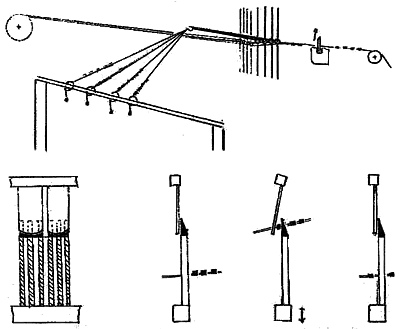
The weaving of a beaded fabric is normally that of the basic fabric with in addition, every four to six blows, the blow to pass the pearls of the decoration. At the same time, the wires bearing the beads designated by the drawing are raised, at the same time that the wing mounted on a frame controlled by the Jacquard mechanism descends, and then the bead wires pass from the lower comb to the upper comb. With the aid of a brush, the pearls which are in the medea are pressed against the comb.
The pitch is closed, the leaf is raised, being pulled by springs, the beads engage between the two combs, the spacing of which allows only the passage of a pearl, which requires, a little later, a slight spacing Of the mobile comb to disengage the beads and facilitate their arrival on the fabric.
This manufacture has existed for two or three years and has occupied a large number of hand looms, after which it has disappeared as well as the material.
Before 1914, however, a silk factory had a beaded fabric woven on a handwriter and in 1924 a manufacturer of combs from Lyon received an order for two pearl combs.
Source: Former fabrics of the Silk and Lyonnais Weaving Factory.
Claude VILLARD - 1963
Second study:
The silks with woven beads date back to a Lyon invention of 1885. The discovery of a patented original comb made it possible to equip a hand loom with all the devices of the time and to weave a piece of silk with pearls. The layout, the remounting and the corresponding cartons are shown, with all the descriptions on how to do the weaving. Our report concerns silk fabrics of Lyons origin that met with good success in the late nineteenth century. They are pearled silks, in other words silks which carry, woven on the surgace, a multitude of small pearls according to a design predisposed on the Jacquard or on the heddles. The beads are threaded into weaving horns and NOT embroidered once the fabric is finished. The Egyptians already used embroidered or woven fabrics with pearls. One can indeed see in a notebook sent to the Chamber of Commerce of Lyon in 1824, by the Consul of France in Egypt, M. Drovetti. In France, at the Musée des Tissus in Lyon, there is an exceptional collection of beaded silks woven at the end of the 19th century by Schultz, Goudon et Cie and other manufacturers. And there is in the library of this museum, in the collection of manuscripts "Theory of Weaving", an analysis of Beaded shaped Gaze. It has been said that they also existed in the silks of Spitalfield, but it would be necessary to make an archival search to see if they were really woven in England or if they were imported from France.
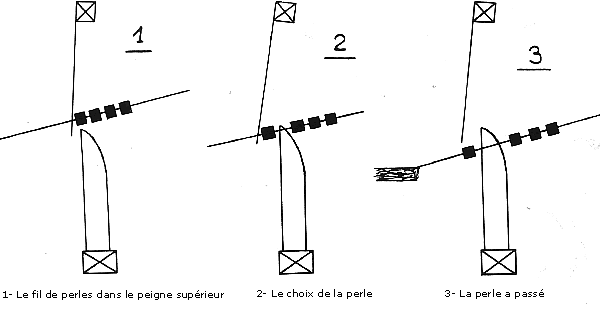
At this top the teeth are welded in groups of two, giving two closed teeth and an open tooth and this will allow the bead wire to pass from the lower comb to the upper comb.
The upper comb is formed of a square iron bar, terminated by two trunnions to allow its oscillation. On this bar are welded the flat teeth terminated in points, the width of which is exactly that of the two teeth of the lower comb welded. Each flat tooth covers the group of two lower teeth so that the third open tooth of the lower comb extends into the upper comb to allow passage of the wire carrying the beads from one to the other.
At the ends of the bar carrying the teeth there is a spring apparatus for the two combs to come into contact with each other and two pressure screws adjust the spacing necessary for the passage of the beads.
The warp wires are warped on velvet coils placed on a creel disposed beneath the length of the loom. The bead threads from the spools all rise above the main chain and pass over a glass bar placed in the width of the loom above the main chain behind the shed.
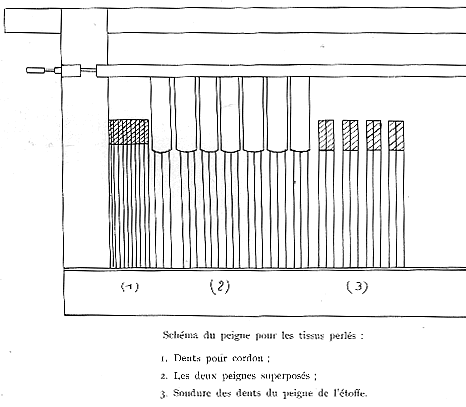
There are actually two combs superimposed one above the other and crossing one another. The lower comb is a comb corresponding to the texture of the fabric. The teeth are different from those of ordinary combs; The thickness is that corresponding to the reduction of the comb, 15 teeth per cm for example; The width of the tooth is at least twice the usual width to withstand the striking of the weft. The teeth are fixed to the base of the comb by the usual methods, but with reinforced welds. The upper part of the teeth ends in a rounding of 17 mm to end in a point, the point turned on the front of the comb, side weaver.

Beaded silk
The beaded fabrics are fabrics whose decoration is accompanied by beads that surround the drawing and cut it, or contribute by mass to make.
The greatest quantity of beaded fabrics that have been made are English gauzes, the decoration of which in pearls was black pearls, and sometimes a round pearl of gray color.
All the qualities of gauze served as the basis for the pearl fabric, from the zephyr gauze to the most complicated shaped gauzes.
The application of the pearl for the decoration of fabrics has been shown on other fabrics, for example on a beige velvet with pearl satin band. The velvet irons are hollowed out in the satin strips to allow the passage of the pearls. However, it is the English gauze which has been the most used as a fabric base. It seems that it owes its vogue to its structure. Indeed, by the method of crossing the threads, the thread carrying the pearl is firmly attached and perfectly invisible in the bottom of the fabric. It may be said that if all the fabrics have not been pearled, it is because the concealment of the threads bearing pearls was impossible in most armor.
The material which allowed the manufacture of the beaded fabrics consists of a comb, or more precisely a double comb mounted on a handpiece leaf.
Beaded silk
The beaded fabrics are fabrics whose decoration is accompanied by pearls
